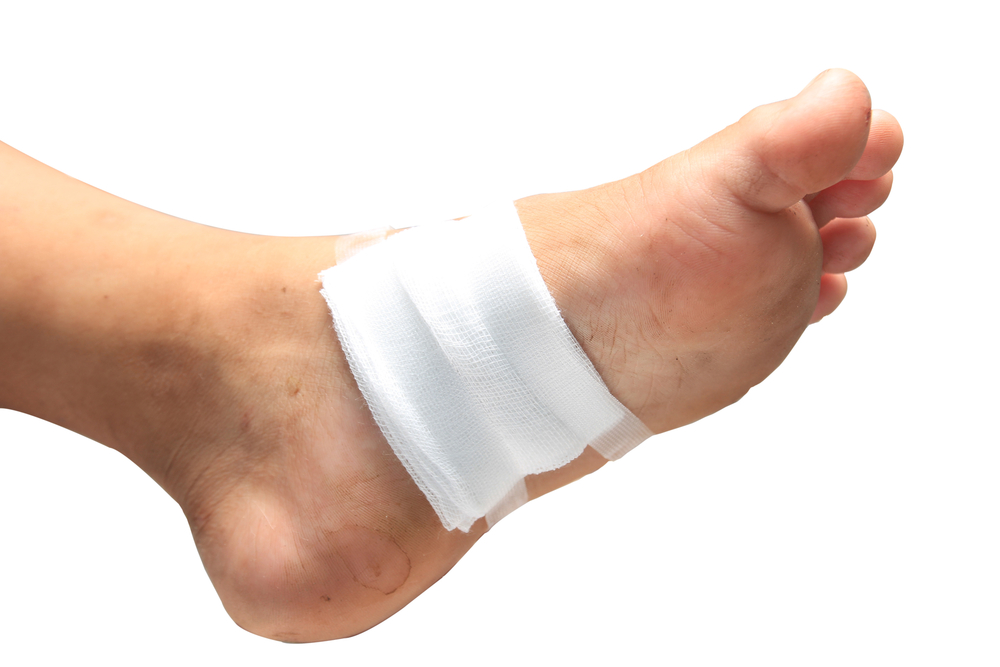A Common Cause of Foot Ulcers
Tuesday, 14 August 2018 00:00 Foot ulcers may develop as a result of poorly managed diabetes. The skin will typically disintegrate, and the layers underneath will become exposed. Common areas on the foot where this condition may develop include the balls of the feet and under the big toe. In patients with severe foot ulcers, the bones of the feet may often become affected and may generally produce pain and discomfort. Research has shown the importance in keeping as much weight as possible off of your feet; this reportedly prevents further infections from developing. Wearing shoe inserts or diabetic shoes may be beneficial in providing additional protection the feet may need for proper healing. If you are afflicted with a foot ulcer, please consult with a podiatrist for information on correct treatment remedies.
Foot ulcers may develop as a result of poorly managed diabetes. The skin will typically disintegrate, and the layers underneath will become exposed. Common areas on the foot where this condition may develop include the balls of the feet and under the big toe. In patients with severe foot ulcers, the bones of the feet may often become affected and may generally produce pain and discomfort. Research has shown the importance in keeping as much weight as possible off of your feet; this reportedly prevents further infections from developing. Wearing shoe inserts or diabetic shoes may be beneficial in providing additional protection the feet may need for proper healing. If you are afflicted with a foot ulcer, please consult with a podiatrist for information on correct treatment remedies.
Wound care is an important part in dealing with diabetes. If you have diabetes and a foot wound or would like more information about wound care for diabetics, consult with Dr. Scott Shrem from Garden State Foot & Ankle Center. Our doctor will assess your condition and provide you with quality foot and ankle treatment.
What Is Wound Care?
Wound care is the practice of taking proper care of a wound. This can range from the smallest to the largest of wounds. While everyone can benefit from proper wound care, it is much more important for diabetics. Diabetics often suffer from poor blood circulation which causes wounds to heal much slower than they would in a non-diabetic.
What Is the Importance of Wound Care?
While it may not seem apparent with small ulcers on the foot, for diabetics, any size ulcer can become infected. Diabetics often also suffer from neuropathy, or nerve loss. This means they might not even feel when they have an ulcer on their foot. If the wound becomes severely infected, amputation may be necessary. Therefore, it is of the upmost importance to properly care for any and all foot wounds.
How to Care for Wounds
The best way to care for foot wounds is to prevent them. For diabetics, this means daily inspections of the feet for any signs of abnormalities or ulcers. It is also recommended to see a podiatrist several times a year for a foot inspection. If you do have an ulcer, run the wound under water to clear dirt from the wound; then apply antibiotic ointment to the wound and cover with a bandage. Bandages should be changed daily and keeping pressure off the wound is smart. It is advised to see a podiatrist, who can keep an eye on it.
If you have any questions, please feel free to contact our office located in Hazlet, NJ . We offer the newest diagnostic and treatment technologies for all your foot care needs.
Blog Archives
- April 2025
- March 2025
- February 2025
- January 2025
- December 2024
- November 2024
- October 2024
- September 2024
- August 2024
- July 2024
- June 2024
- May 2024
- April 2024
- March 2024
- February 2024
- January 2024
- December 2023
- November 2023
- October 2023
- September 2023
- August 2023
- July 2023
- June 2023
- May 2023
- April 2023
- March 2023
- February 2023
- January 2023
- December 2022
- November 2022
- October 2022
- September 2022
- August 2022
- July 2022
- June 2022
- May 2022
- April 2022
- March 2022
- February 2022
- January 2022
- December 2021
- November 2021
- October 2021
- September 2021
- August 2021
- July 2021
- June 2021
- May 2021
- April 2021
- March 2021
- February 2021
- January 2021
- December 2020
- November 2020
- October 2020
- September 2020
- August 2020
- July 2020
- June 2020
- May 2020
- April 2020
- March 2020
- February 2020
- January 2020
- December 2019
- November 2019
- October 2019
- September 2019
- August 2019
- July 2019
- June 2019
- May 2019
- April 2019
- March 2019
- February 2019
- January 2019
- December 2018
- November 2018
- October 2018
- September 2018
- August 2018
- July 2018
- June 2018
- May 2018
- April 2018
- March 2018








